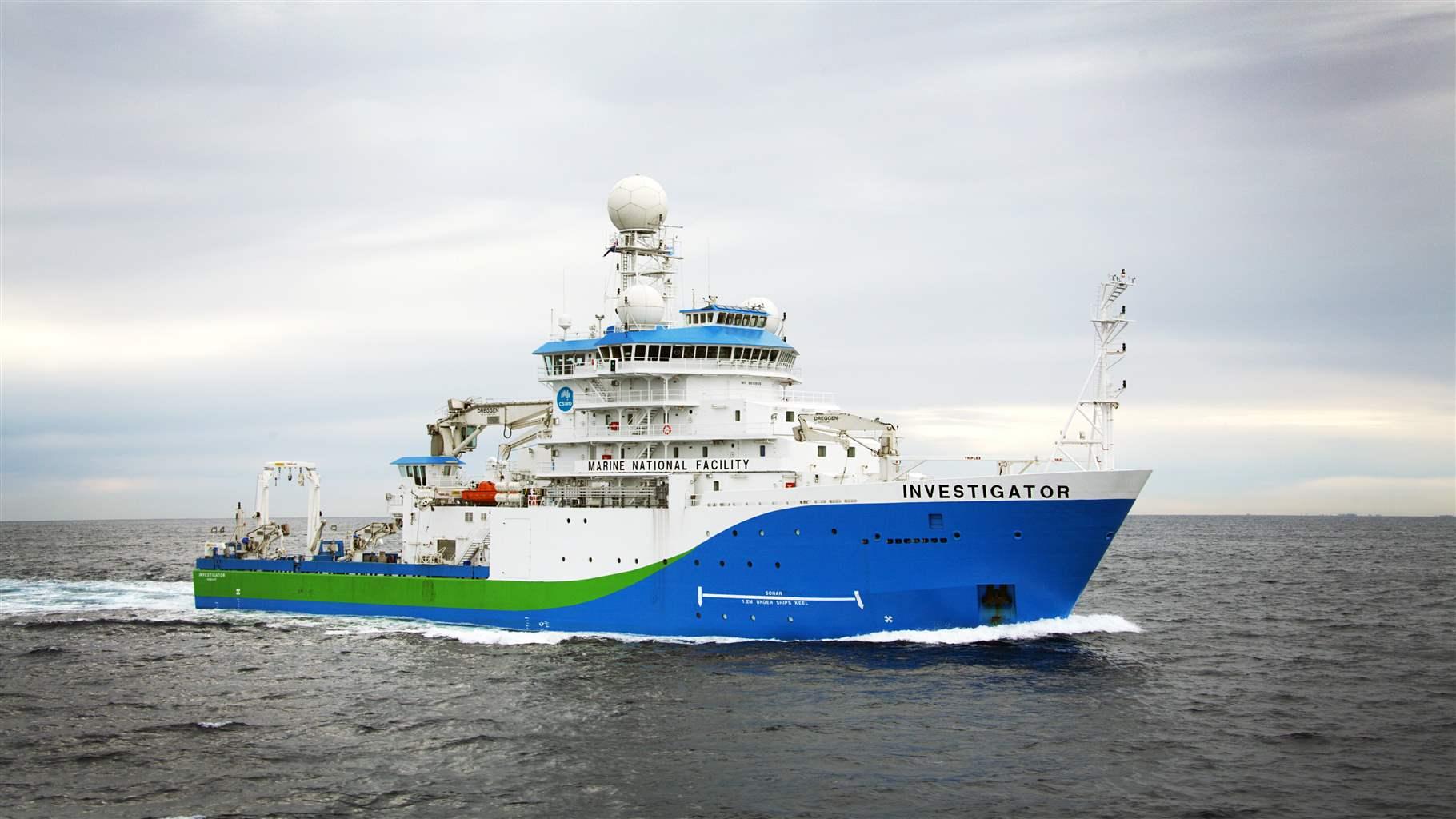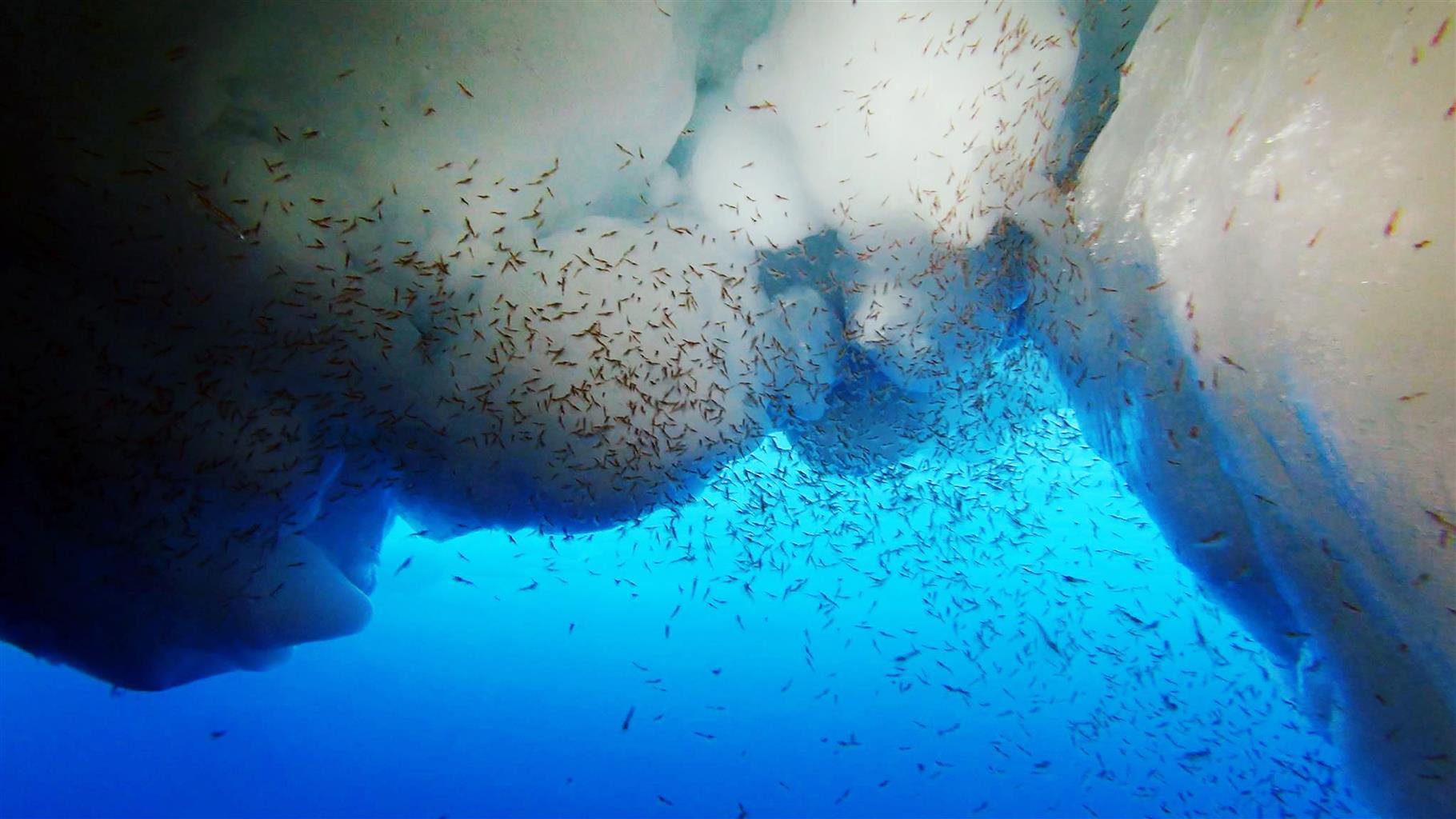Southern Ocean Research Expedition Goes Full Steam Ahead Despite Pandemic
Status of krill around East Antarctica is critical to conservation policy

A team of 20 scientists from the Australian Antarctic Program left Hobart, Tasmania, today to spend two months working in the Southern Ocean off East Antarctica aboard the research vessel Investigator—one of the few research missions over the past year that haven’t been canceled because of the COVID-19 pandemic.
Their focus? Antarctic krill, which are the largest krill species globally. That puts them at the center of the Antarctic food web and makes them key players in the fight against climate change. But myriad stressors threaten krill, from warming waters and associated ocean acidification to concentrated industrial fishing in coastal areas in the Antarctic Peninsula—fishing that is harming krill predators, including penguins.
Over the next two months, the scientists onboard the Commonwealth Scientific and Industrial Research Organisation (CSIRO) research vessel will use acoustics, trawls, seabird and whale observations, oceanography, genetics, and, for the first time, specially designed underwater camera systems and deep sea moorings to study krill and their environment.
The voyage’s chief scientist, So Kawaguchi of the Australian Antarctic Division (AAD), said the team would determine how much krill—i.e., its biomass—lives in waters off Mawson research station in East Antarctica in an effort to ensure the sustainable development of a krill fishery in the region.
“Understanding the environment in which the krill live, and how it is changing, is key to understanding how krill biomass could be affected in the future,” Kawaguchi said. “We want to understand how krill are distributed in relation to predators like whales and seabirds, ocean currents, food sources, seafloor habitat, and other krill swarms.”
The voyage will undertake six survey lines, or transects, across more than 793,100 square kilometers (306,200 square miles), and a fine-scale “krill box” survey just off the Mawson coast—where prior research was conducted in 2015 and 2016—that will include krill distribution and abundance sampling, as well as phytoplankton and genetics sampling.
The team plans to share its data—particularly the krill biomass estimate—with the 26 member governments of the Commission for the Conservation of Antarctic Marine Living Resources (CCAMLR), which has a mandate to protect the Southern Ocean’s diverse marine life and manages the Antarctic krill fishery. To help achieve protection for this spectacular region, The Pew Charitable Trusts and its partners are encouraging CCAMLR to adopt ecosystem-based fisheries management practices and establish a network of large-scale marine protected areas (MPAs) around Antarctica.
At CCAMLR’s annual meeting in October, the commission will consider updates to its ecosystem-based management system for the krill fishery, including protective catch limits that account for where and when predators feed.
CCAMLR has also committed to create an MPA network around the continent. In a step toward fulfilling that commitment, CCAMLR delegates in October will consider a proposal by Australia, the European Union, France, Norway, and Uruguay to create an MPA to protect a large section of the East Antarctic region. That MPA—coupled with catch limits that minimize the impacts on predators from localized fishing—would create a climate refuge for krill, penguins, and other wildlife. The East Antarctica MPA would also preserve the region’s distinct biodiversity and unique marine ecosystem.
Once CCAMLR makes good on its commitment, the commission is expected to use a research and monitoring plan to determine the impacts of protections on the regional ecosystem. This survey would provide baseline data of ecosystem health for comparison against later monitoring.
Dirk Welsford, the AAD’s acting chief scientist and the CCAMLR Scientific Committee chair, said: “This survey will contribute data that is critical for CCAMLR to meet its mandate of protecting Antarctic wildlife and science-based management measures for the Antarctic krill fishery. This is really important to the Australian Antarctic program, and, despite the pandemic, we have prioritized this research during this Antarctic field season.”
This voyage is supported by Pew, the AAD, the Australia Antarctic Program Partnership, and the Antarctic Science Foundation, with a grant of sea time (ship time and logistical and technical support) by CSIRO Marine National Facility on the Investigator.
Upcoming articles in this series, “Krill Chronicles from East Antarctica,” will include profiles of and firsthand experiences from scientists onboard the Investigator, along with other updates on this critical Southern Ocean research expedition.
Nicole Bransome works on Pew’s Antarctic and Southern Ocean conservation initiative.













